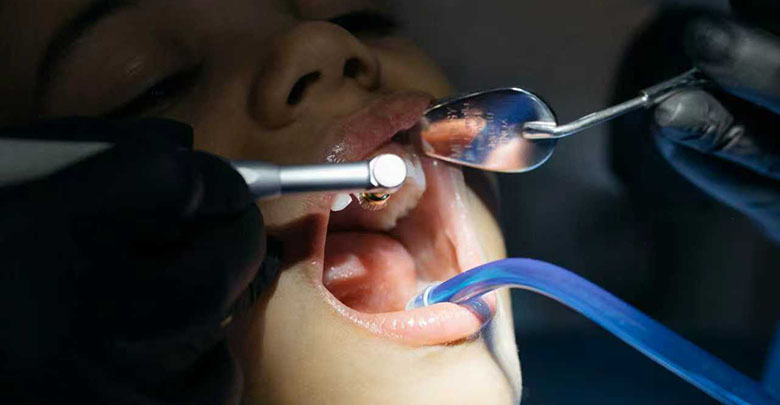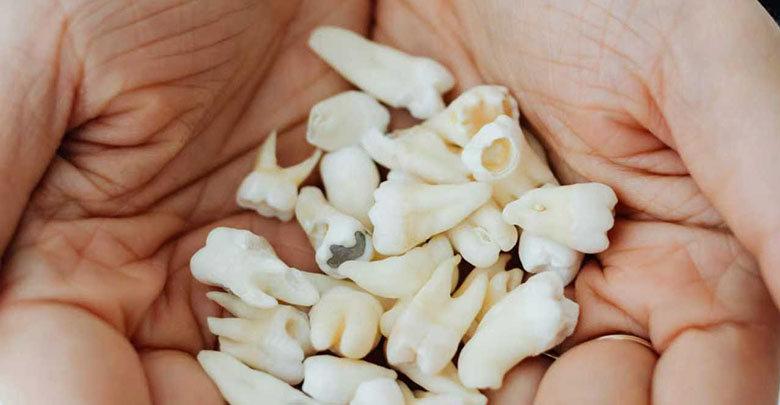
Od narodzin do pojawienia się pierwszego zęba mlecznego, ludzie są narażeni na ryzyko próchnicy zębów, jednego z najczęstszych problemów zdrowotnych na całym świecie. Jest to szczególnie powszechne wśród dzieci, młodzieży i osób starszych.
Próchnica zębów, znana jako próchnica zębów, występuje, gdy aktywność bakterii rozkłada szkliwo zębów, tworząc czarną płytkę nazębną, która powoduje korozję powierzchni. Z czasem uszkodzenie to rozszerza się na korzeń zęba, nasilając erozję, aż ząb staje się wydrążony - podobnie jak jabłko ugryzione przez owady, z widoczną dziurą na powierzchni i rdzeniem całkowicie wydrążonym w środku. Z czasem próchnica nieuchronnie prowadzi do uszkodzenia korzenia. Niebezpieczeństwa związane z próchnicą zębów są zatem poważne.
Badania medyczne wskazują, że spożywanie pokarmów bogatych w skrobię, owoców o wysokiej zawartości cukru lub mleka zawierającego laktozę wyzwala produkcję substancji kwasotwórczych przez substytuty cukru, które powodują korozję zębów. Najbardziej rozpowszechnionymi bakteriami próchnicotwórczymi w jamie ustnej człowieka są Gram-dodatnie bakterie tlenowe, takie jak Streptococcus mutans i Streptococcus saccharophilus.
Z czasem ubytki stopniowo zmieniają kolor z żółtego na czarny, często towarzyszy im ból dziąseł i trudności w żuciu spowodowane stanem zapalnym i ropniami wokół chorego zęba. Ciężkie przypadki mogą prowadzić do zapalenia miazgi.

Dlatego też w niniejszym artykule przeanalizujemy objawy próchnicy zębów, aby pomóc zidentyfikować wczesne oznaki, umożliwiając szybką interwencję i zapobieganie.
Ubytki nie powstają z dnia na dzień, ale w rzeczywistości od ich powstania do całkowitego rozpadu zęba mija kilka lat - wystarczająco dużo czasu, aby odwrócić szkody! Próchnica postępuje od początkowej próchnicy do ubytku, zwykle trwając od 1,5 do 2 lat.
Objawy próchnicy zębów różnią się w zależności od grupy wiekowej, płci i budowy fizycznej. Ogólnie rzecz biorąc, we wczesnych stadiach próchnicy zazwyczaj nie występują żadne zauważalne objawy. Jednakże, gdy próchnica postępuje z dnia na dzień z powodu infekcji przez biliony bakterii w jamie ustnej, może ona stopniowo się rozszerzać i potencjalnie prowadzić do następujących objawów:
Wrażliwość zębów
Kiedy odczuwasz ostre, kłujące uczucie w zębach po krótkiej ekspozycji na zimne pokarmy, takie jak lody latem, gorące napoje, takie jak herbata zimą, a nawet picie wina i jedzenie ciasta na przyjęciach, oznacza to, że Twoje zęby stały się wrażliwe. Wrażliwość ta często sygnalizuje, że ubytki już się utworzyły, potencjalnie wskazując, że próchnica rozwinęła się do umiarkowanego stadium.

Ból zęba i inne dolegliwości
Podczas samokontroli lub gdy ból zmusza Cię do wizyty u dentysty, możesz zauważyć widoczne dziury i wgłębienia w zębach. Ból często pojawia się podczas jedzenia. Ubytki różnią się rozmiarem, a zmiany mogą dotyczyć powierzchni zęba lub sięgać głęboko do dziąseł.Zatrzymywanie pokarmu i nieprzyjemny zapach z ust
Jeśli jedzenie wielokrotnie utknie w tym samym miejscu po jedzeniu i wydziela nieprzyjemny zapach po usunięciu wykałaczką lub nicią dentystyczną, może to być spowodowane rozkładającymi się resztkami jedzenia uwięzionymi między sąsiednimi zębami. Ta uwięziona materia fermentuje, pogarszając ubytki. Dlatego należy czyścić zęby natychmiast po posiłkach i używać płynu do płukania jamy ustnej w celu utrzymania higieny jamy ustnej.
Zmiany koloru zębów
Zaczynając od bladożółtego odcienia, przechodząc do brązowawych tonów, następnie czarnych włókien, a na końcu czarnej płytki nazębnej, której nie można wypłukać. Jest to szczególnie widoczne na zębach trzonowych z głębokimi bruzdami, ponieważ obszary te najłatwiej przeoczyć podczas rutynowych zabiegów higieny jamy ustnej.
Infekcja dziąseł
Jeśli badanie stomatologiczne ujawni infekcję dziąseł, oznacza to zaawansowaną próchnicę. Ubytki często prowadzą do zapalenia miazgi, powodując zaczerwienienie, obrzęk i ból dziąseł, a nawet ropnie. Ból może być rozdzierający. Postępujące od wczesnego krwawienia dziąseł do późniejszego rozchwiania zębów, końcowe stadium próchnicy często wymaga leczenia kanałowego - długotrwałej i bolesnej procedury.
Ważne uwagi
Najwcześniejsze stadia próchnicy zębów często nie wykazują zauważalnych objawów. Zaleca się regularne kontrole stomatologiczne (zalecane co najmniej raz w roku) w celu wczesnego wykrycia i leczenia. Jeśli wystąpi którykolwiek z powyższych objawów, należy niezwłocznie zgłosić się do dentysty, aby zapobiec dalszej próchnicy.
